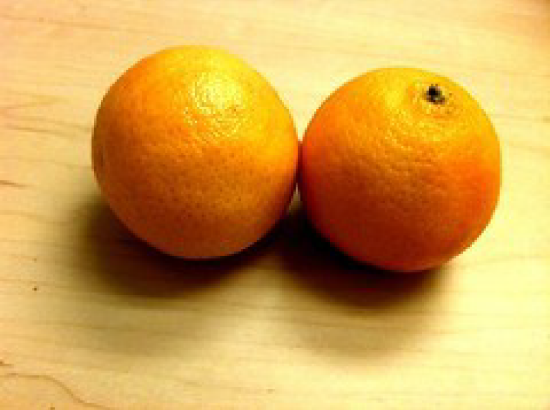9.2: Berries and Citrus
- Page ID
- 21620
\( \newcommand{\vecs}[1]{\overset { \scriptstyle \rightharpoonup} {\mathbf{#1}} } \)
\( \newcommand{\vecd}[1]{\overset{-\!-\!\rightharpoonup}{\vphantom{a}\smash {#1}}} \)
\( \newcommand{\id}{\mathrm{id}}\) \( \newcommand{\Span}{\mathrm{span}}\)
( \newcommand{\kernel}{\mathrm{null}\,}\) \( \newcommand{\range}{\mathrm{range}\,}\)
\( \newcommand{\RealPart}{\mathrm{Re}}\) \( \newcommand{\ImaginaryPart}{\mathrm{Im}}\)
\( \newcommand{\Argument}{\mathrm{Arg}}\) \( \newcommand{\norm}[1]{\| #1 \|}\)
\( \newcommand{\inner}[2]{\langle #1, #2 \rangle}\)
\( \newcommand{\Span}{\mathrm{span}}\)
\( \newcommand{\id}{\mathrm{id}}\)
\( \newcommand{\Span}{\mathrm{span}}\)
\( \newcommand{\kernel}{\mathrm{null}\,}\)
\( \newcommand{\range}{\mathrm{range}\,}\)
\( \newcommand{\RealPart}{\mathrm{Re}}\)
\( \newcommand{\ImaginaryPart}{\mathrm{Im}}\)
\( \newcommand{\Argument}{\mathrm{Arg}}\)
\( \newcommand{\norm}[1]{\| #1 \|}\)
\( \newcommand{\inner}[2]{\langle #1, #2 \rangle}\)
\( \newcommand{\Span}{\mathrm{span}}\) \( \newcommand{\AA}{\unicode[.8,0]{x212B}}\)
\( \newcommand{\vectorA}[1]{\vec{#1}} % arrow\)
\( \newcommand{\vectorAt}[1]{\vec{\text{#1}}} % arrow\)
\( \newcommand{\vectorB}[1]{\overset { \scriptstyle \rightharpoonup} {\mathbf{#1}} } \)
\( \newcommand{\vectorC}[1]{\textbf{#1}} \)
\( \newcommand{\vectorD}[1]{\overrightarrow{#1}} \)
\( \newcommand{\vectorDt}[1]{\overrightarrow{\text{#1}}} \)
\( \newcommand{\vectE}[1]{\overset{-\!-\!\rightharpoonup}{\vphantom{a}\smash{\mathbf {#1}}}} \)
\( \newcommand{\vecs}[1]{\overset { \scriptstyle \rightharpoonup} {\mathbf{#1}} } \)
\( \newcommand{\vecd}[1]{\overset{-\!-\!\rightharpoonup}{\vphantom{a}\smash {#1}}} \)
\(\newcommand{\avec}{\mathbf a}\) \(\newcommand{\bvec}{\mathbf b}\) \(\newcommand{\cvec}{\mathbf c}\) \(\newcommand{\dvec}{\mathbf d}\) \(\newcommand{\dtil}{\widetilde{\mathbf d}}\) \(\newcommand{\evec}{\mathbf e}\) \(\newcommand{\fvec}{\mathbf f}\) \(\newcommand{\nvec}{\mathbf n}\) \(\newcommand{\pvec}{\mathbf p}\) \(\newcommand{\qvec}{\mathbf q}\) \(\newcommand{\svec}{\mathbf s}\) \(\newcommand{\tvec}{\mathbf t}\) \(\newcommand{\uvec}{\mathbf u}\) \(\newcommand{\vvec}{\mathbf v}\) \(\newcommand{\wvec}{\mathbf w}\) \(\newcommand{\xvec}{\mathbf x}\) \(\newcommand{\yvec}{\mathbf y}\) \(\newcommand{\zvec}{\mathbf z}\) \(\newcommand{\rvec}{\mathbf r}\) \(\newcommand{\mvec}{\mathbf m}\) \(\newcommand{\zerovec}{\mathbf 0}\) \(\newcommand{\onevec}{\mathbf 1}\) \(\newcommand{\real}{\mathbb R}\) \(\newcommand{\twovec}[2]{\left[\begin{array}{r}#1 \\ #2 \end{array}\right]}\) \(\newcommand{\ctwovec}[2]{\left[\begin{array}{c}#1 \\ #2 \end{array}\right]}\) \(\newcommand{\threevec}[3]{\left[\begin{array}{r}#1 \\ #2 \\ #3 \end{array}\right]}\) \(\newcommand{\cthreevec}[3]{\left[\begin{array}{c}#1 \\ #2 \\ #3 \end{array}\right]}\) \(\newcommand{\fourvec}[4]{\left[\begin{array}{r}#1 \\ #2 \\ #3 \\ #4 \end{array}\right]}\) \(\newcommand{\cfourvec}[4]{\left[\begin{array}{c}#1 \\ #2 \\ #3 \\ #4 \end{array}\right]}\) \(\newcommand{\fivevec}[5]{\left[\begin{array}{r}#1 \\ #2 \\ #3 \\ #4 \\ #5 \\ \end{array}\right]}\) \(\newcommand{\cfivevec}[5]{\left[\begin{array}{c}#1 \\ #2 \\ #3 \\ #4 \\ #5 \\ \end{array}\right]}\) \(\newcommand{\mattwo}[4]{\left[\begin{array}{rr}#1 \amp #2 \\ #3 \amp #4 \\ \end{array}\right]}\) \(\newcommand{\laspan}[1]{\text{Span}\{#1\}}\) \(\newcommand{\bcal}{\cal B}\) \(\newcommand{\ccal}{\cal C}\) \(\newcommand{\scal}{\cal S}\) \(\newcommand{\wcal}{\cal W}\) \(\newcommand{\ecal}{\cal E}\) \(\newcommand{\coords}[2]{\left\{#1\right\}_{#2}}\) \(\newcommand{\gray}[1]{\color{gray}{#1}}\) \(\newcommand{\lgray}[1]{\color{lightgray}{#1}}\) \(\newcommand{\rank}{\operatorname{rank}}\) \(\newcommand{\row}{\text{Row}}\) \(\newcommand{\col}{\text{Col}}\) \(\renewcommand{\row}{\text{Row}}\) \(\newcommand{\nul}{\text{Nul}}\) \(\newcommand{\var}{\text{Var}}\) \(\newcommand{\corr}{\text{corr}}\) \(\newcommand{\len}[1]{\left|#1\right|}\) \(\newcommand{\bbar}{\overline{\bvec}}\) \(\newcommand{\bhat}{\widehat{\bvec}}\) \(\newcommand{\bperp}{\bvec^\perp}\) \(\newcommand{\xhat}{\widehat{\xvec}}\) \(\newcommand{\vhat}{\widehat{\vvec}}\) \(\newcommand{\uhat}{\widehat{\uvec}}\) \(\newcommand{\what}{\widehat{\wvec}}\) \(\newcommand{\Sighat}{\widehat{\Sigma}}\) \(\newcommand{\lt}{<}\) \(\newcommand{\gt}{>}\) \(\newcommand{\amp}{&}\) \(\definecolor{fillinmathshade}{gray}{0.9}\)Berries
Berries are small, juicy fruits that grow on vines and bushes worldwide. Thin skins and many tiny seeds that are often so small they go unnoticed characterize berries. Some of the fruits classified here as berries do not fit the botanical definition (for example, raspberries and straw berries), while fruits that are berries botanically (for example, bananas and grapes) are classified elsewhere. Berries may be eaten plain or used in everything from bread to soup and sorbet. They make especially fine jams and compotes.
Berries must be fully ripened on the vine, as they will not ripen further after harvesting. Select berries that are plump and fully co lo red. Avoid juice-stained containers and berries with whitish-gray or black spots of mold. All berries should be refrigerated and used promptly. Do not wash berries until just before they are needed, as washing removes some of their aroma and softens them.
Blackberries
Blackberries are similar to raspberries, but are larger and shinier, with a deep purple to black color. Thorny blackberry vines are readily found in the wild; commercial production is limited. Their peak season is mid-June through August. Loganberries, Marionberries, olallie berries and boysenberries are blackberry hybrids.
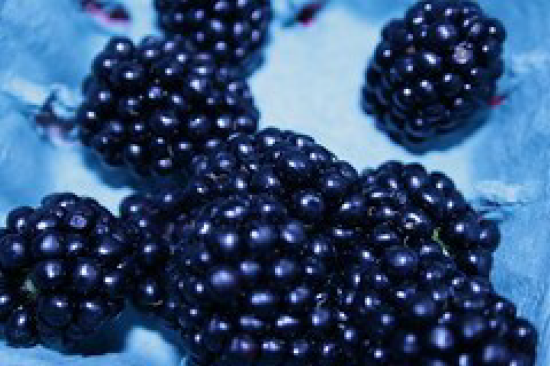
Blueberries
Blue berries are small and firm, with a true blue to almost black skin and a juicy, light gray-blue interior. Cultivated berries (high-bush varieties) tend to be larger than wild (low-bush) ones. Blueberries are native to North America and are grown commercially from Maine to Oregon and along the Atlantic seaboard. Their peak season is short, from mid-June to mid-August.
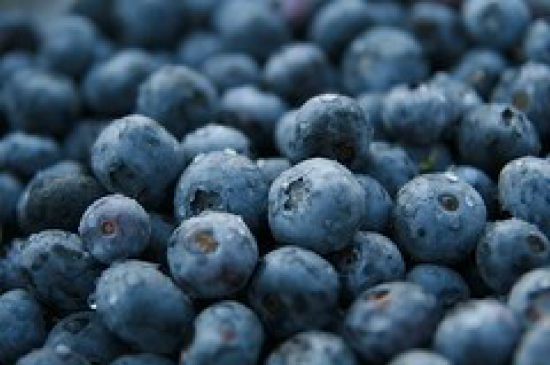
Cranberries
Cranberries, another native North American food, are tart, firm fruit with a mottled reel skin. They grow on low vines in cultivated bogs (swamps) throughout Massachusetts, Wisconsin, and New Jersey. Rarely eaten raw, they are made into sauce or relish or are used in breads, pies or pastries. Cranberries are readily available frozen or made into a jelly-type sauce and canned. Although color does not indicate ripeness, cranberries should be picked over before cooking to remove those that are soft or bruised. Their peak harvesting season is from Labor Day through October, leading to the association of cranberries with Thanksgiving dinner.
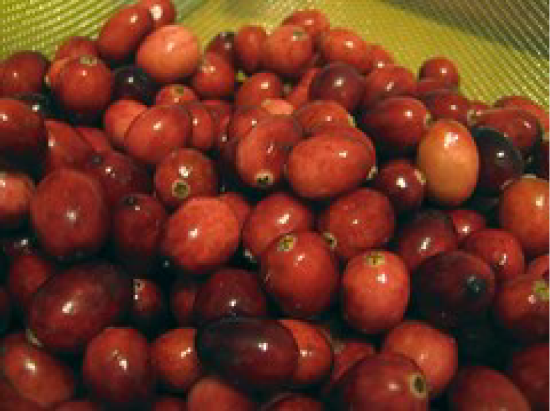
Currants
Currants are tiny, tart fruits that grow on shrubs in grapelike clusters. The most common are a beautiful, almost translucent red, but black and golden (or white) varieties also exist. All varieties are used for jams, jellies and sauces, and black currants are made into a liqueur, crème de cassis. Although rarely grown in the United States, currants are very popular and widely available in Europe, with a peak season during the late summer. (The dried fruits called currants are not produced from these berries; they are a special variety of dried grapes.)
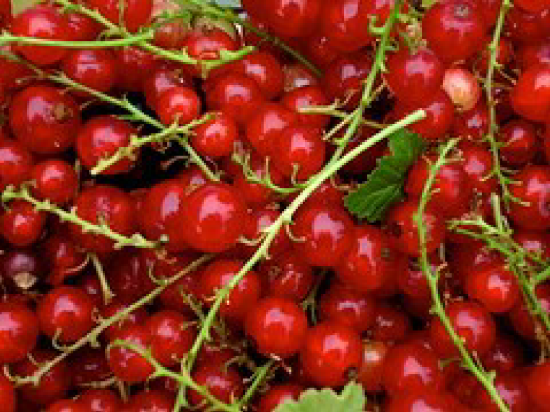
Raspberries
Raspberries are perhaps the most delicate of all fruits. They have a tart flavor and velvety texture. Red raspberries are the most common, with black, purple and gold en berries available in some markets. When ripe, the berry pulls away easily from its white core, leaving the characteristic hollow center. Because they can be easily crushed and are susceptible to mold, most of the raspberries grown are marketed frozen. They grow on thorny vines in cool climates from Washington State to western New York and are imported from New Zealand and South America. The peak domestic season is from late May through November.
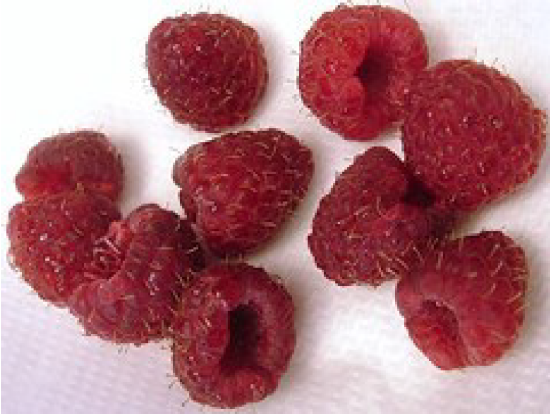
Strawberries
Strawberries are brilliant red, heart-shaped fruits that grow on vines. The strawberry plant is actually a perennial herb; the berry's flesh is cove red by tiny black seeds called achenes, which are the plant's true fruits.
Select berries with a good red color and intact green leafy hull. (The hulls can be easily removed with a paring knife.) Avoid berries with soft or brown spots. Huge berries may be lovely to look at, but they often have hollow centers and little flavor or juice. Although strawberries are available to some extent all year, fresh California strawberries are at their peak from April through June.
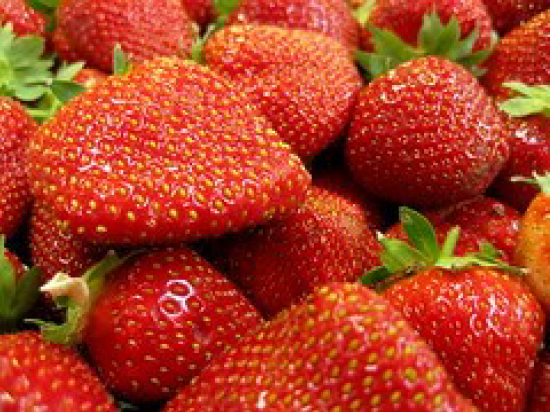
Citrus
Citrus fruits include lemons, limes, grapefruits, tangerines, kumquats, oranges and several hybrids. They are characterized by a thick rind, most of which is a bitter white pith (albedo) with a thin exterior layer of co lore d skin known as the zest. Their flesh is segmented and juicy. Citrus fruits are acidic, with a strong aroma; their flavors vary from bitter to tart to sweet.
Citrus fruits grow on trees and shrub s in tropical and subtropical climates worldwide. All citrus fruits are fully ripened on the tree and will not ripe n further after harvesting. They should be refrigerated for longest storage. Select fruits that feel heavy and have thin, smooth skins. Avoid those with large blemishes or moist spots.
Grapefruits
Grape fruits are large and round with a yellow skin, thick rind and tart flesh. They are an 18th-century hybrid of the orange and pummelo (a large, coarse fruit used mostly in Middle and Far Eastern cuisines). Two varieties of grape fruit are widely available all year: white-fleshed and pink- or ruby-fleshed. White grapefruits produce the finest juice, although pink grapefruits are sweeter. Fresh grapefruits are best eaten raw or topped with brown sugar and lightly broiled.
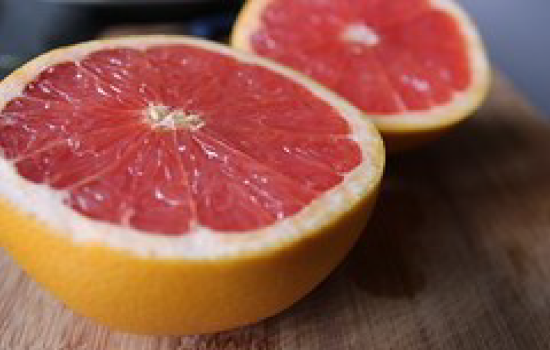
Kumquats
Kumquats are very small, oval-shaped, orange-colored fruits with a soft, sweet skin and slightly bitter flesh. They can be eaten whole, either raw or preserved in syrup, and may be used in jams and preserves.
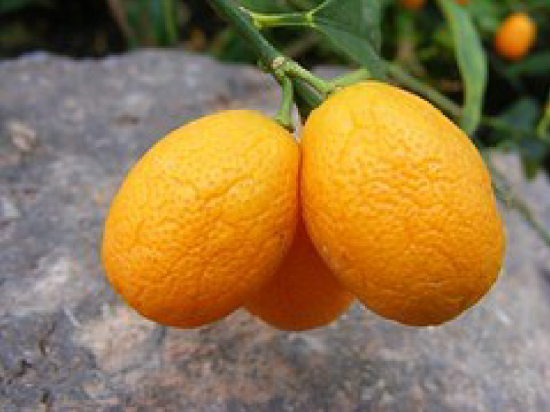
Lemons
The most commonly used citrus fruits, lemons, are oval-shaped, bright yellow fruits available all year. Their strongly acidic flavor makes them unpleasant to eat raw but perfect for flavoring desserts and confections. Lemon juice is also widely used in sauces, especially for fish, shellfish and poultry. Lemon zest is candied, or used as garnish. Rubbing the skin of a lemon or other citrus fruit with a sugar cube extracts much of the aromatic oil. The cube can then be crushed or dissolved to use in formulas calling for citrus flavor.
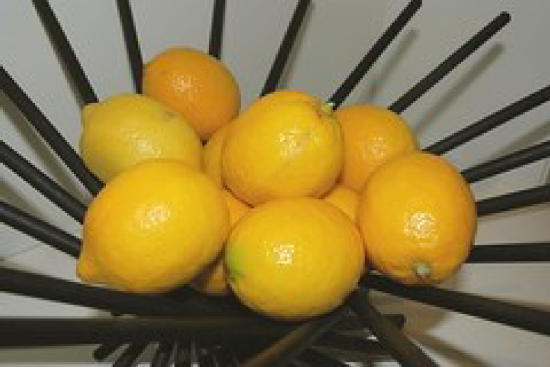
Limes
Limes are small fruits with thin skins ranging from yellow-green to dark green. Limes are too tart to eat raw and are often substituted for lemons in prepared dishes. They are also juice d or used in cocktails, curries or desserts. Lime zest can be grated and used to give color and flavor to a variety of dishes. Limes are available all year; their peak season is during the summer. The key lime is a small tart lime variety native to South Florida and used to make key lime pie.
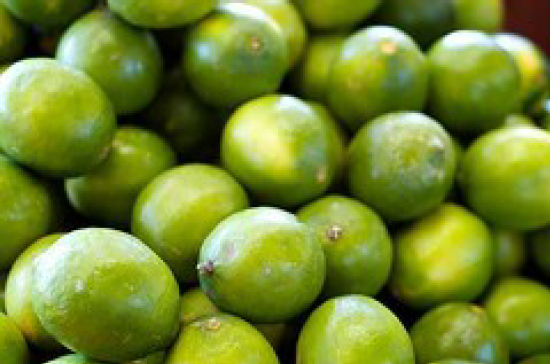
Oranges
Oranges are round fruits with a juicy, orange –colored flesh and a thin, orange skin. They can be either sweet or bitter.
Valencia oranges and navel oranges (a seed less variety) are the most popular sweet oranges. They can be juiced for beverages or sauces, and the flesh may be eaten raw, added to salads, cooked in desserts or use d as a garnish. The zest may be grated or julienned for sauces or garnish. Sweet oranges are available all year; their peak season is from December to April.
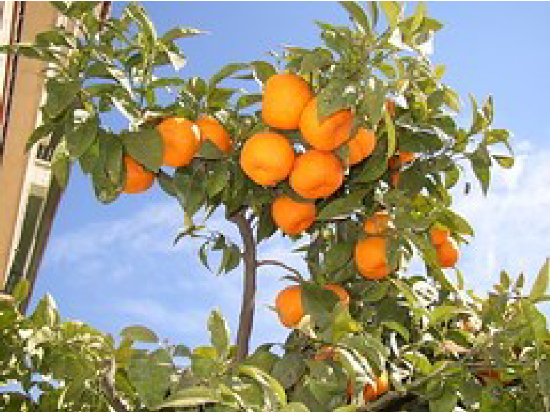
Blood Oranges
Blood oranges are also sweet but are small, with a rough, reddish skin. Their flesh is streaked with a blood-red color. Blood oranges are available primarily during the winter months and are eaten raw, juiced or used in salads or sauces. When selecting sweet oranges, look for fruits that feel plump and heavy, with unblemished skin. The color of the skin depends on weather conditions; a green rind does not affect the flavor of the flesh.
Bitter oranges include the Seville and bergamot. They are used primarily for the essential oils found in their zest. Oil of bergamot gives Earl Grey tea its distinctive flavor; oil of Seville is essential to curacao, Grand Marnier and orange flower water. Seville oranges are also used in marmalades and sauces for meats and poultry.
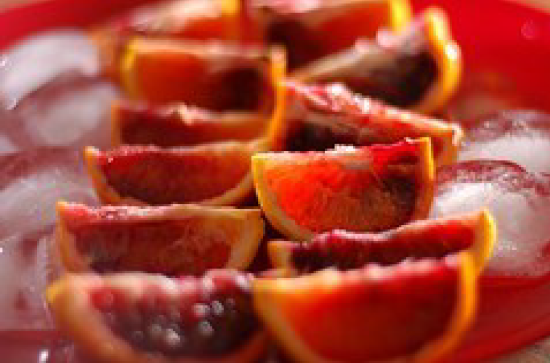
Tangerines
Tangerines, sometimes referred to as mandarins, are small and dark orange. Their rind is loose and easily removed to reveal sweet, juicy, aromatic segments. Tangerines are most often eaten fresh and uncooked, but are available canned as mandarin oranges. Tangelos are a hybrid of tangerines and grapefruits. They are the size of a medium orange; they have a bulbous stem end and few to no seeds.
